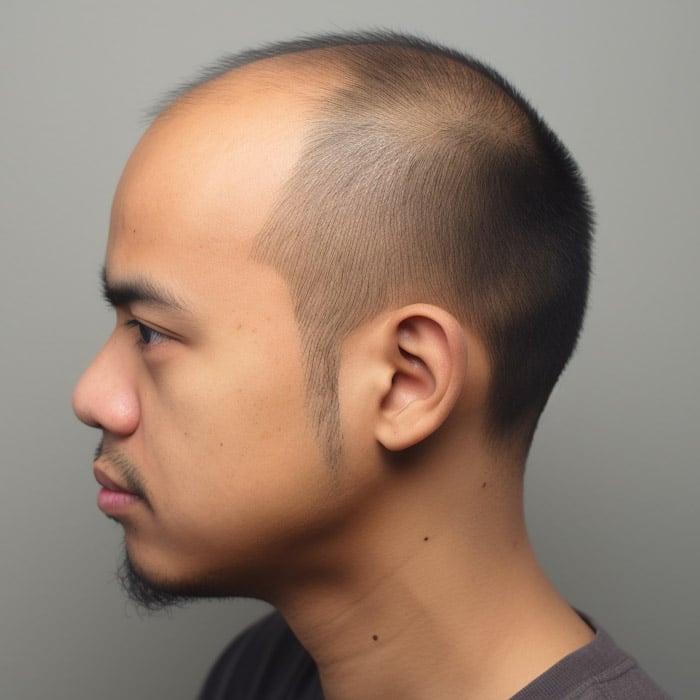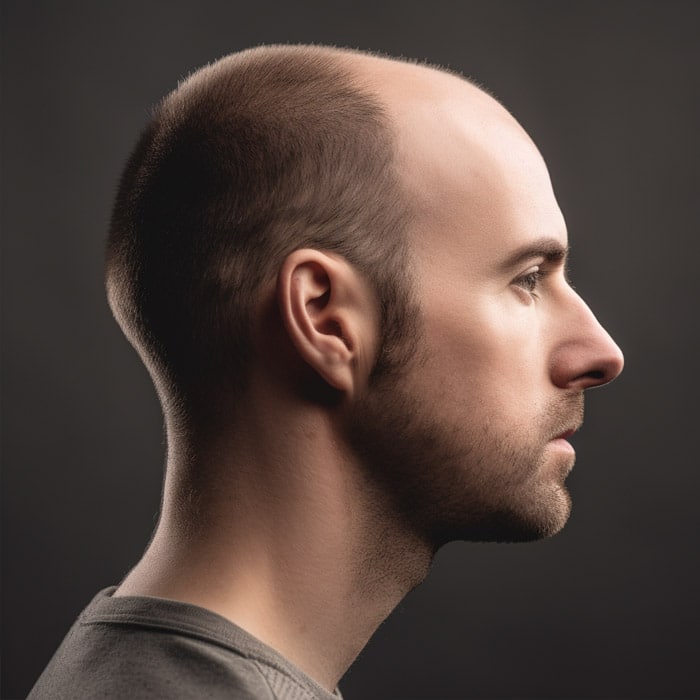FUE Hair Transplant in Los Angeles
If you’re among the many men and women suffering from hair loss or thinning hair, a FUE hair restoration treatment may be the right solution for you.
An affordable and minimally invasive procedure, FUE (follicular unit extraction) can restore the appearance of your hair using your natural hair follicles.
Whether your goal is to restore your hairline or boost your hair density, our team at Best Hair Transplant is here to help you learn about the process and assess whether it’s the right fit for you.
What Is an FUE Transplant?t
FUE stands for Follicular Unit Extraction. It’s one of two primary methods of obtaining hair follicles for patients who want to transplant their real hair to thinning areas. FUE is associated with a quicker patient recovery time and minimal post-operative pain. It also doesn’t pose risks of nerve damage or permanent discomfort.
The other procedure is called strip harvesting or the strip method. Both methods involve extracting hair follicles, which naturally occur in groups of one to four hairs. They can both be used for the same larger procedure, which is called follicular unit transplantation (FUT).
For certain patients, one procedure may be better than another. Other patients may benefit from both. At Best Hair Transplant, we offer complimentary consultations to assess each patient’s needs and determine which type of hair transplant surgery will be the best fit.
How Successful Is an FUE Hair Transplant?
A successful FUE hair transplantation depends on the survival of the follicular units that are extracted from the scalp. If they’re cut or transected, they may not survive the transplant.
Best Hair Transplant employs one of the most renowned hair transplant surgeons in the country with state-of-the-art technology to offer our clients the best FUE hair transplant in Los Angeles.
It’s worth noting that most FUE hair transplant patients need to return for a follow-up treatment to reach their ultimate hair loss restoration goals. The first time will deliver the most dramatic change, but density improves after another visit. At Best Hair Transplant, we offer cost-effective treatments to make sure a complete transformation is always within reach.
A Quick History of FUE in Los Angeles
The services available today through a Los Angeles FUE hair transplant clinic are the result of decades of innovation.
Hair transplantation was first developed in the 1950s by Dr. Orentreich who used 4 mm punches to remove follicles from one area of the scalp to transplant elsewhere. Follicular unit extraction was first described in 1988 by Masumi Inaba in Japan who introduced the use of a 1 mm needle. As a result, the modern follicular unit hair transplantation process took off in the 1990s.
Today in the leading hair transplant clinics in LA, FUE hair restoration techniques are used to help patients enjoy a more full head of hair after hair loss or thinning.
FUE Hair Restoration vs. the Strip Method
FUE hair restoration can often be used when the strip method is not an option, and vice versa. Not sure which is right for you? Just reach out to our team of experts. We can address all your questions about the process, pricing and more so you feel fully informed before committing to a treatment plan.
| Criteria | FUE Hair Transplant Method | Strip Method |
| Method | Using a surgical micro punch tool to loosen and separate intact hair follicles from the scalp’s skin | Involves taking a single strip of hair follicles from the donor area of the head. |
| Scarring | Does not leave a long, visible scar on the scalp. Sometimes leaves very faint pitting. | It often leaves a linear scar across the head several inches long. Advancements in the procedure have resulted in thinner, smaller scars. |
| Ideal for Short Haircuts | Yes, due to the lack of visible scarring. | No, due to visible scarring. |
| Tool Size | Small micro punches (0.6 to 0.8mm) are used to remove hair follicles. These punches are too small to be noticeable. | Tool sizes can vary, but they’re typically larger than the punches used for FUE. |
What Are the Benefits of Getting an FUE Transplant in Los Angeles?
There are several advantages from both the patient’s and the surgeon’s perspectives to proceeding with an FUE hair restoration procedure. These include:
- A need for fewer staff members and less equipment
- Minimal preparation and recovery time
- An easier procedure for the patient
- The ability to wear very short hair with no visible scar
- The option to use body hair for the transplant if needed
- Almost invisible scars
In addition, patients do not need to revisit the surgeon for suture removal since no stitches or sutures are required.





Who Is a Good Candidate for FUE Hair Restoration in Los Angeles?
Many people are excellent candidates for FUE hair transplants, with few exceptions. If any of the following indications apply to you, you might be an ideal candidate for an FUE hair transplant in Los Angeles:
- You have androgenetic alopecia in a Norwood class 3 pattern
- You want to wear your hair extremely short
- You don’t want to have the linear scar from a strip method procedure visible
- You have limited hair loss
- You only require small sessions
- You have androgenetic alopecia in small balding areas
- The skin on your scalp is too tight for the strip method
- You have limited cosmetic areas you want to treat
- You have limited areas of alopecia that are secondary to skin conditions
- You want to treat a strip method scar from a previous strip method procedure
- You tend to heal from injuries with thickened scars
- You are an athlete who needs to resume vigorous activity as soon as possible
- You prefer minimal pain and discomfort
- You have scarring from trauma, past surgical procedures, or dermatologic conditions of the scalp
While these may apply to you, there are other factors that a surgeon who specializes in FUE hair restoration will need to assess. This is why the best place to start your LA FUE hair restoration journey is with a consultation at Best Hair Transplant.
Who Might Not Be a Candidate for an FUE Hair Transplant in Los Angeles?
If any of the following apply to you, another method may be more suitable to help you achieve your hair restoration goals:
- You don’t have enough donor hair follicles
- You have scars that make an FUE hair transplant problematic
- You are not able to withstand long or multiple treatment sessions
- You are not willing to cut your hair in the donor area short





What Happens During a Follicular Unit Extraction?
Preparation
Upon arrival, the hair on the back of your head is trimmed to 1-2mm in length. You’ll lie in a prone position on a special procedure chair or table, with staff ensuring comfort.
Anesthesia Application
A local anesthesia is applied over the entire area that contains the hair follicles to be transplanted. The anesthesia solution contains Xylocaine and is diluted with saline.
Follicle Extraction
Follicles are extracted from the donor area using specialized micro-punching instruments under 2.5-5x magnification. The surgeon scores the skin with an instrument and turns the instrument to loosen the hair follicle. Gently, the surgeon removes the graft with small forceps and preserves it in a cool lactate solution or saline. Extracted grafts usually contain one to four, or sometimes five to six hairs.
Graft Implantation
After the extraction process, the grafts are implanted in their new location. The surgeon takes extreme care to prevent damage to the follicles.
What Is the Recovery Time Like for FUE Hair Restoration?
After an FUE hair transplant in Los Angeles, discomfort can usually be managed with over-the-counter medications. Most patients report minimal or no pain.
The healing time is significantly shorter with FUE, with the donor area healing in just seven days compared to two to three weeks for the strip method. The recipient area heals in about ten days for FUE versus at least 14 days for the strip method.
Additionally, patients can return to vigorous activities, such as exercise, in as little as one to two weeks after their FUE procedure, and most return to work the next day.
Caring for Your Scalp Following FUE Hair Restoration in Los Angeles
Unlike the strip method, which requires stitches and can lead to bleeding, FUE doesn’t necessitate special scalp care.
Following these basic care requirements can contribute to optimal healing and results. If you have any questions about aftercare, just contact us before or after your treatment.
| Time Frame | Care Instructions for FUE Hair Restoration in Los Angeles |
| Immediately After |
|
| A Few Hours After |
|
| First Day After |
|
| During the First Four Days |
|
| Ten Days After |
|
| After Four Days |
|
| After One Month |
|
| After Two Months |
|
Ready to Learn More About FUE Hair Restoration in Los Angeles?
At Best Hair Transplant, we offer affordable surgical and non-surgical hair transplant solutions, including FUE hair transplants. For almost 20 years, we’ve helped patients look and feel their best with hair restoration by expert surgeons.
Hair loss restoration is a personal journey. That’s why our team is here to provide support, education, and minimally invasive treatments to help you reach your goals.
If you’re interested in learning more about FUE restoration and what this innovative procedure can do for you, contact us today to schedule a consultation.
